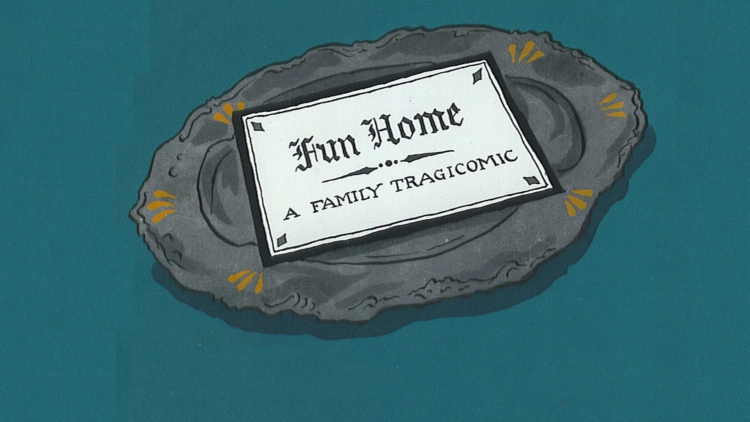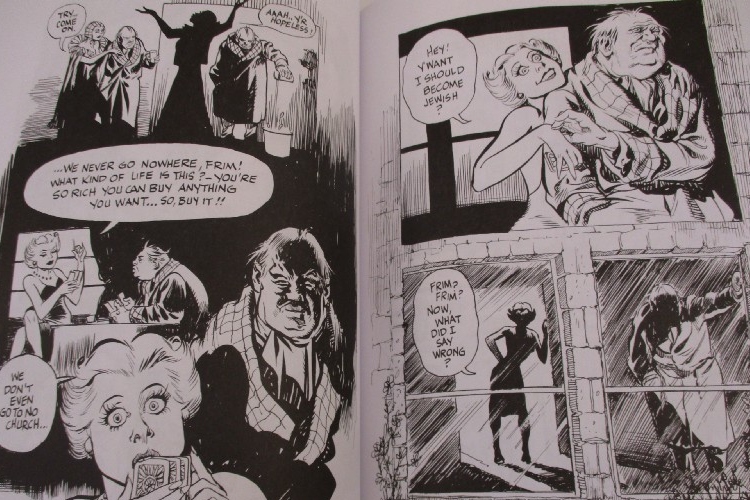Graphic Novels Matter | Discovering Graphic Novels For Adults
I like big literary books and I cannot lie that they’ve always been devoid of any illustrations and speech bubbles. Give me some Orhan Pamuk, speckle my collection with Ishiguro and throw in a Sally Rooney novel for good measure, and hey, Christmas has come early. Which would’ve explained my consternation when I was given a graphic novel to read when I was completing my master’s degree.
Writing a thesis. On a picture book. I’d probably chosen the wrong module.
Anyway, we had to read Fun Home by American cartoonist and graphic novelist Alison Bechdel. As I found out soon after, she’s quite a big deal. Fun Home has been made into a Broadway musical and Bechdel’s well-known comic strip Dykes To Watch Out For introduced what is now known as the Bechdel Test (technically the Bechdel-Wallace test) to measure female representation in fiction. Okay, I was definitely intrigued. I ended up giving it a shot.

At first, I was completely overwhelmed by looking at the richness on the page. The visual and verbal content, the mesmerising balance between both and the demand on the reader to actively engage with them baffled me. The more I looked at it the more details I noticed. It wasn’t like reading a normal novel because I had to analyse drawings as well as written content, and it wasn’t like watching a film because every individual shot, or panel, had to be examined and re-examined for meaning. Graphic novels for adults actually existed, and I was completely transfixed.
What struck me the most was how tactile the entire experience was. When it comes to reading traditional novels, l, like many others, like to hold a physical copy rather than read an e-book. It’s more personal and intimate, as if the novel is a medium for physical proximity with the writer.
The graphic novel takes this tactility a step further, as it involves drawing. As Dr Hillary Chute, an expert on comics and graphic novels says, “unlike with prose, wherein its creator does not have to touch it—today one can write a book and never physically touch one’s own prose at all—the spatialized form of comics… mandates a baseline manual sensuality.” The reading experience itself, as I’ll later discuss in my article on Alison Bechdel’s Fun Home, forces the reader to consciously push down the pages to get to the details lost within the spine.

But if this sounds like a taxing experience, then the content of the graphic novel might make the hard work worthwhile. Graphic novels can most often be categorised as a powerfully subversive form of art. In fact in their short history, they have continuously subverted the normativity prevalent in their contexts, through their content and form.
Form, here, is important to discuss as there’s a lot of confusion regarding graphic novels and comics. Is the former just a fancier term for the latter? Not exactly. Graphic novels delineate a specific genre of comics. As comics can simply be described as sequential art, they date back to cave paintings in France and Egyptian hieroglyphics, to more modern mediums such as manga, Franco-Belgian and European comics, superhero comics, comic strips, political cartoons and comic books.
Graphic novels on the other hand were popularised by Will Eisner to market his book A Contract with God (1978). In order to sell his book that dealt with adult themes such as loss of faith, racism and suicide, he intended to move away from the term comics, which were, and still are, often stigmatised as a genre for children.

Subversion is a core part of comics history, especially as a reaction to the Comics Code Authority self-censoring body. An underground movement in response to the Code brought about “underground comix” in which sexual, religious and sometimes violent taboos could be explored. This paved the way for popular graphic novels such as Art Spiegelman’s Maus, Marjane Satrapi’s Persepolis, Justin Green’s Binky Brown Meets the Holy Virgin Mary, Chris Ware’s Jimmy Corrigan: The Smartest Kid on Earth, amongst many others, in terms of style as well as content.
A notable feature of the underground comix movement is that it coincided with second-wave feminism, which then acted as a catalyst for political work in the genre. In fact, Dr Hillary Chute notes that “it is only in the comics underground that the U.S. first saw any substantial work by women allowed to explore their own artistic impulses.”
Modern graphic novelists continue to address this crisis of representation. Alison Bechdel, whose works are deeply rooted in feminism and queerness, notes in one of her talks, “I think the basic deal was the representations of women that I saw in the world just didn’t connect with me, I didn’t think like that’s who I was.” She, amongst many other graphic novelists, also voice how the combination of word and image, and also the space between image and word create a unique language and means of representation. Art Spiegelman who created Pulitzer-Prize winning Maus remarks that the graphic novel was a narrative that “couldn’t have happened in any other idiom”. Representation of trauma, LGBT, feminism, sex, secularism have been consistently represented in a vast majority of graphic novels.

While the term graphic novel originated and has been popularised in the U.S., the form continues to be adapted in distinctive ways by cartoonists all over the world from different cultural and political backgrounds such as Marjane Satrapi, Hideshi Hino, Cyril Pedrosa, Sarnath Banerjee, to name but a few. In Graphic Novels Matter, I shall explore various different styles and content that these graphic novelists incorporate in their works.
Lastly, for those of you wondering, I did finish my thesis on Fun Home and went on to write a dissertation on graphic novels. There’s no escaping this form once you get into it. You’ve been warned.

